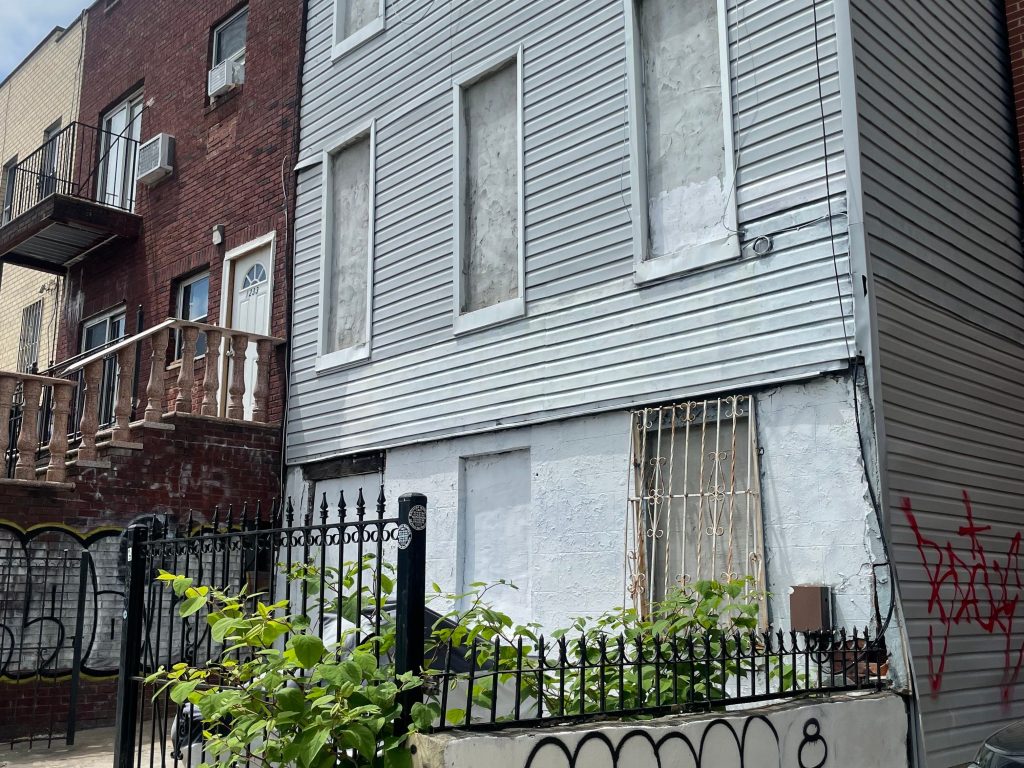- The Big Apple's housing market is booming, which has left the city with an affordability crisis.
- At the same time, the state's foreclosure and eviction levels are climbing.
- New York state's so-called "zombie law" can help turn foreclosed properties into affordable housing.
New York is facing a crippling housing shortage, but there are thousands of vacant homes across the state that could help ease its affordability crisis.
One group has a solution to turn these so-called "zombie" homes into affordable housing by forcing banks to complete the foreclosure process and return the housing to livable conditions.
Zombie homes are everything they sound like — decrepit, dangerous, and abandoned properties. But they are also a relic of the subprime-loan gold rush of the mid-2000s — a time when many communities of color fell victim to predatory lending practices that often ended in foreclosure.
The Local Initiatives Support Corporation, a national nonprofit organization, has funded and provided guidance to the Department of Housing Preservation and Development — which is responsible for developing and maintaining New York City's stock of affordable housing — to ensure banks follow the state's "zombie law" to restore vacant homes into affordable units.
There are an estimated 1.3 million zombie homes across the US, and New York state has the highest share. As of 2022, thousands of these vacant homes are sprinkled throughout the state, especially in communities of color. They are not only dampening property values and fostering local crime — the wasted housing stock is also contributing to the state's worsening housing shortage.
But there's a solution in the works, said Jenny Weyel, the director of Neighborhood Stabilization at New York City's HPD. "We've brought successful lawsuits against banks who have let vacant homes deteriorate, and now we are finding ways to renovate and resell them to low-income families," she said.
New York is overrun with zombies
HPD estimates that more than 2,000 zombie homes stand vacant in NYC alone.
As New York's housing crisis escalates, prices are spiking and — in an eerie similarity to the Great Recession — people are losing their homes through evictions and foreclosures.
In 2013, a wave of foreclosures hit New York, resulting in a surplus of vacant houses and homes hanging in the foreclosure process. When the state became home to the second-largest housing-foreclosure inventory in the nation, the state attorney general's office introduced the Abandoned Property Neighborhood Relief Act, which became known as the zombie law.
With the Local Initiatives Support Corporation's financial help, HPD has used the law to force banks to make good on their promises of maintaining New York's vacant homes. The law — the first of its kind — could serve as a model for other states hoping to tackle backlogs of vacant and distressed houses with bank liens.
It requires financial institutions to maintain the outside of vacant homes that hold delinquent mortgages — fixing windows, trimming grass, and patching roofs — until a foreclosure process is completed. If banks disregard the law, they are fined a noncompliance fee of $500 a day for each house.
And so far, it's worked on more than 11,000 homes.
Through the "vacants initiative," LISC and HPD have ensured banks comply with the law by tracking and studying properties — thus certifying that vacant homes are maintained properly and do not present a threat to the communities they plague. Their efforts have also led to new pathways for restoring these properties to affordable housing.
"Every vacant house restored means a safe, affordable home for a family, a boost to the tax rolls, and an infusion of vitality and care for the block and the neighborhood," Helene Caloir, the senior director of the New York State Housing Stabilization Fund, told Insider. "It has a positive multiplier effect on the life of the community that you can see just by walking around."
Success in Brownsville
A home located in the neighborhood of Brownsville, Brooklyn, is one of the city's biggest success stories.
In 2017, Wells Fargo owned the vacant home but had failed to maintain the property. HPD filed a complaint.
When it didn't receive a sufficient response from Wells Fargo, the city demolished the property, leaving the bank on the hook for the demolition fee. Seeking forgiveness for that debt, Wells Fargo transferred ownership of the property to the City of New York.
By 2024, the property will be included in a Habitat for Humanity homeownership project that plans to transform it into affordable multifamily housing.
"With New York City's housing crisis, we can't let homes sit vacant for year," Weyel said. "Zombie homes are a potentially untapped source of affordable housing. Families could be living in these homes, and they could provide a homeownership opportunity for someone who might not be able to afford it."
